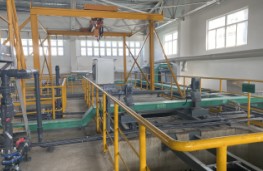In today’s world, ensuring safe drinking water has become a crucial concern for individuals, communities, and governments. Access to clean and uncontaminated water is essential for human health and well-being. This article explores the various analysis methods and tools used to assess the quality of drinking water, helping us understand the contaminants present and take appropriate measures to safeguard public health.

Safe drinking water plays a vital role in maintaining our overall health. It is essential for hydration, nutrient absorption, and the proper functioning of bodily systems. Drinking contaminated water can lead to various waterborne diseases, such as diarrhea, cholera, typhoid, and hepatitis. Inadequate water quality can pose serious health risks, especially for vulnerable populations such as children, the elderly, and individuals with compromised immune systems.
Before discussing the analysis methods, it is essential to understand the common contaminants that can be present in drinking water. These contaminants can originate from various sources, including natural processes, industrial activities, agricultural practices, and aging water distribution systems. Some common pollutants include:
To ensure safe drinking water, rigorous analysis methods are employed to assess its quality and identify potential contaminants. These methods include:
Physical analysis methods focus on evaluating the visual and sensory properties of water. They help detect visible impurities, turbidity, and odor. Common physical analysis methods include:
Chemical analysis methods involve assessing the presence and concentration of various chemical substances in drinking water. These methods help identify contaminants such as heavy metals, pesticides, and industrial pollutants. Common chemical analysis methods include:
Microbiological analysis methods focus on detecting and quantifying microorganisms present in drinking water. These methods help identify harmful bacteria, viruses, and parasites that can cause waterborne diseases. Common microbiological analysis methods include:
Advancements in technology have led to the development of innovative methods for water analysis. These emerging technologies offer enhanced sensitivity, accuracy, and efficiency in detecting contaminants. Some notable emerging technologies include:
To ensure ongoing water quality monitoring, various tools and technologies are available for both professionals and individuals. These tools facilitate regular testing and provide timely information on the water’s safety. Some commonly used tools include:
Portable water testing kits are convenient tools that allow individuals to perform basic water quality tests themselves. These kits typically include test strips, colorimetric reagents, and simple instructions for use. They provide quick and preliminary results for parameters such as pH, chlorine, hardness, and microbial contaminants.
Online water quality monitoring systems utilize sensors placed at various points in the water distribution network to monitor key parameters continuously. These systems collect real-time data on factors like pH, temperature, turbidity, and dissolved oxygen. The collected data is then analyzed to identify trends, detect anomalies, and trigger alerts when water quality deviates from established norms.
Ensuring safe drinking water is a critical responsibility to protect public health. By employing various analysis methods and utilizing tools for water quality monitoring, we can detect contaminants, assess their levels, and take appropriate measures to safeguard the water supply. From traditional physical and chemical analysis to emerging technologies and continuous monitoring systems, these methods and tools contribute to providing clean and safe drinking water for all.
Q1: Why is water quality analysis important?
A1: Water quality analysis is essential to identify contaminants and ensure the safety of drinking water. It helps prevent waterborne diseases and protects public health.
Q2: Are portable water testing kits reliable?
A2: Portable water testing kits provide quick and preliminary results. While they offer convenience, their accuracy may vary. For a comprehensive analysis, professional testing is recommended.
Q3: How do online water quality monitoring systems work?
A3: Online water quality monitoring systems use sensors to collect real-time data on key parameters. The data is analyzed to detect anomalies and ensure continuous monitoring of water quality.
Q4: What are the benefits of emerging technologies for water analysis?
A4: Emerging technologies offer improved sensitivity, accuracy, and efficiency in detecting contaminants. They help in early detection and provide valuable insights for water quality management.
Q5: How can individuals contribute to ensuring safe drinking water?
A5: Individuals can play a part by conserving water, preventing pollution, and being mindful of their water usage. Regular maintenance of plumbing systems and periodic testing can also help maintain water quality.